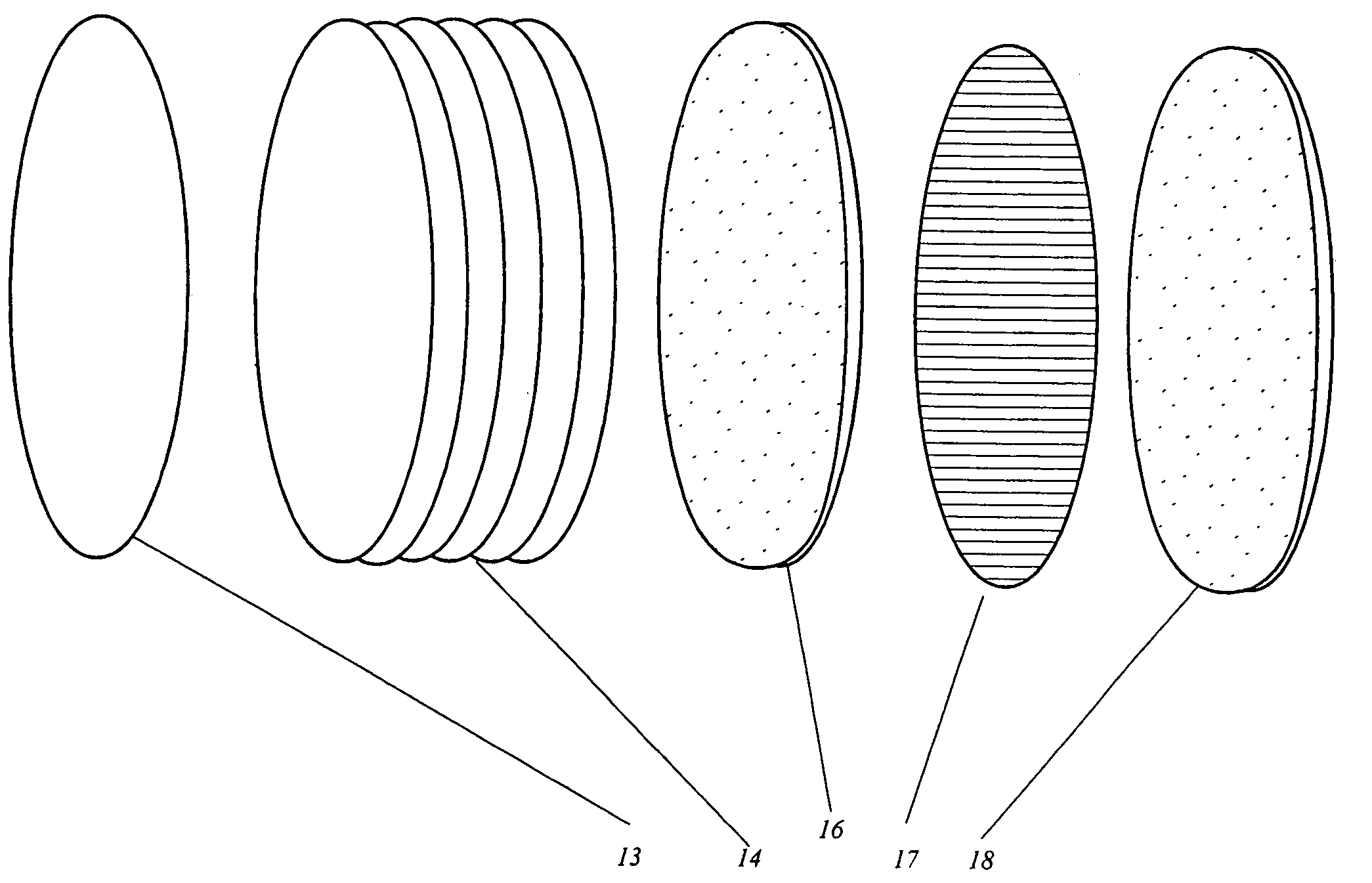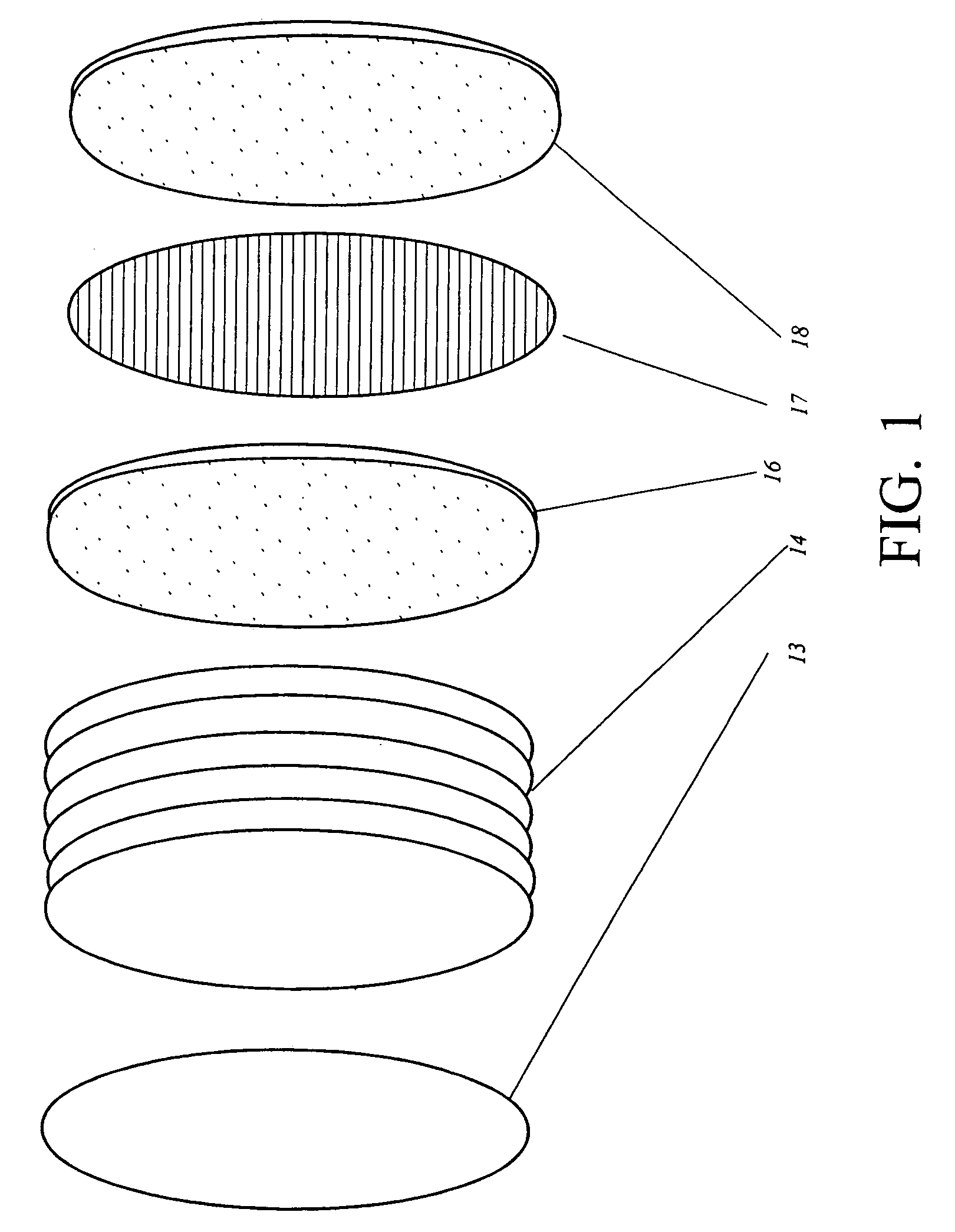Waterman's sunglass lens
a technology of sunglass lens and lens body, applied in the field of sunglasses, can solve the problems of cellular proliferation, ocular injury from ultraviolet exposure, and damage to the outer segment of the photoreceptor, so as to reduce the glare and overall light transmission
- Summary
- Abstract
- Description
- Claims
- Application Information
AI Technical Summary
Benefits of technology
Problems solved by technology
Method used
Image
Examples
Embodiment Construction
[0050] Disclosed is an improved ten-layer lightweight CR-39™ (plastic) polarized, dielectric mirrored sunglass that gives a light transmission profile in which 100% of UVA & B light absorption occurs in high contrast blue-blocking amber and color-discriminating grey. Either embodiment is optimum for use on the water.
[0051]FIG. 1 is a perspective exploded sketch showing the various lens layers according to the present invention. The outermost layer 13 of lens 2 is a hydrophobic overcoat. The hydrophobic coating is preferably a silicon-based chemical coating of known type such as commercially available from OMS, 177108 Canada Inc., 5120 Courtrai, Suite 12, Montréal, Québec, Canada H3W 1A7. This coating 13 may be deposited by known dipping or chemical vapor deposition processes, and it makes the lens water repellant for better vision during rainstorms or water related activities. In addition, hydrophobic overcoat 13 makes the lens easier to clean as contaminants do not adhere to the l...
PUM
 Login to View More
Login to View More Abstract
Description
Claims
Application Information
 Login to View More
Login to View More - R&D
- Intellectual Property
- Life Sciences
- Materials
- Tech Scout
- Unparalleled Data Quality
- Higher Quality Content
- 60% Fewer Hallucinations
Browse by: Latest US Patents, China's latest patents, Technical Efficacy Thesaurus, Application Domain, Technology Topic, Popular Technical Reports.
© 2025 PatSnap. All rights reserved.Legal|Privacy policy|Modern Slavery Act Transparency Statement|Sitemap|About US| Contact US: help@patsnap.com



